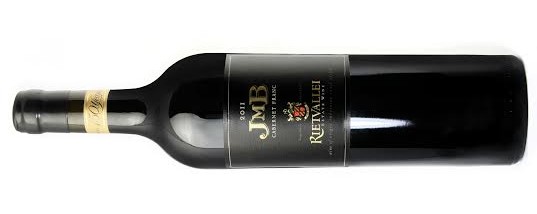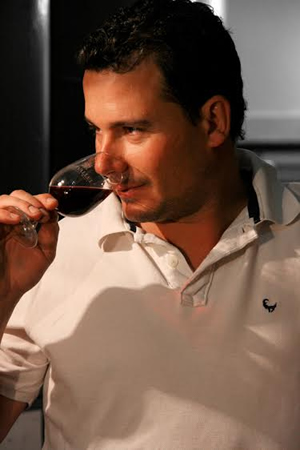Danie Keet, Die Burger
To the winemaker – and enthusiast – it is an unforgiving grape. Cabernet Franc, the famous fruit from Bordeaux, does not follow the mainstream. At its best the grape is loaded with lovely complexity: muscled and bold, but with a less fruit driven and more mineral, acute character than Cabernet Sauvignon. And an unmistakable ability to impress.
On the flip side, however, the conditions for growing this variety and the winemaker’s skill in the cellar must be spot on. If not Cabernet Franc makes a thin and green wine.
As a result there are relatively few Cabernet Franc producers in South Africa, and those existing few tend to source their grapes from Stellenbosch and Durbanville.
The question is: can the Robertson region’s prosperity lie with Cabernet Franc? Kobus Burger, owner and cellarmaster of the Rietvallei Estate there, is the region’s Cabernet Franc pioneer, and given the quality of wines coming from his cellar, this area “on the other side of the mountain” just might become the next big home of quality Cabernet Franc.
“As with many things in the wine industry, Rietvallei’s Cabernet Franc actually started with a completely different goal in mind,” says Kobus. “When I came to the farm and started working under my father Johnny’s wing, I was determined to make a Bordeaux blend. For this you need grapes like Cabernet Sauvignon, Merlot, Petit Verdot, Malbec and Cabernet Franc. Cabernet Sauvignon was non-negotiable because I knew it to be a cultivar that thrives on our farm. With the other varieties I took a bit of a chance and planted Cabernet Franc – in 2003.”
That Bordeaux blend turned out to be the Estéanna Red, which is mainly driven by Cabernet Sauvignon and Cabernet Franc and was launched in 2007.
According to Kobus’ own palate, and also feedback from the market, the presence of Cabernet Franc in the blend was noticable in a positive sense. So much so that it was eventually decided to bottle Cabernet Franc on its own, as well as together with the other components in the Estéanna Bordeaux style wine.
“And more recently, what started as pure curiosity lead to one of Rietvallei’s flagship wines, the JMB Cabernet Franc,” says Kobus. “Now that the vines are beginning to age, the influence of the Robertson terroir on the wine can be perceived much more vividly, and it is an accomplished fact that the fickle Cabernet Franc grape does well here.”
Apart from the lime rich soils – Robertson’s soils contain the most lime of any South African wine region – the sunny, yet cool and dry climate is a definite asset.
“Lime soils create elegance and balance in wine, and is very sought-after around the world – Burgundy is probably the best example of this,” says Kobus. “And given our relatively low rainfall coupled with the dry wind I find that Cabernet Franc ripens particularly well and evenly which means that we don’t have to worry about green flavours. On the contrary, the fruit elements really come to the fore in a big way.”
The respect that Kobus has for this grape variety is evident in the treatment that the JMB receives in the cellar.
“Wild yeast gets the wine going, so no commercial yeast is added – only the natural yeast cells in the air convert the grapes’ sugar into alcohol,” he says. And when it comes to wood maturation, the wine receives 26 months in new French oak. “Of course you don’t want to overpower your wine with wood, but long contact with good oak builds the wine’s structure and ensures that the complexity of the Cabernet Franc flavours develops to the full.”
Cabernet Franc is currently a very fashionable “it-wine” due to its relative scarcity in South Africa and the fact that once you’ve had one good Cabernet Franc, you will seldom pass up another opportunity to experience it.
And in the future the road to such gems will increasingly lead to Robertson.






